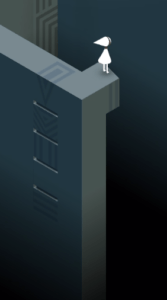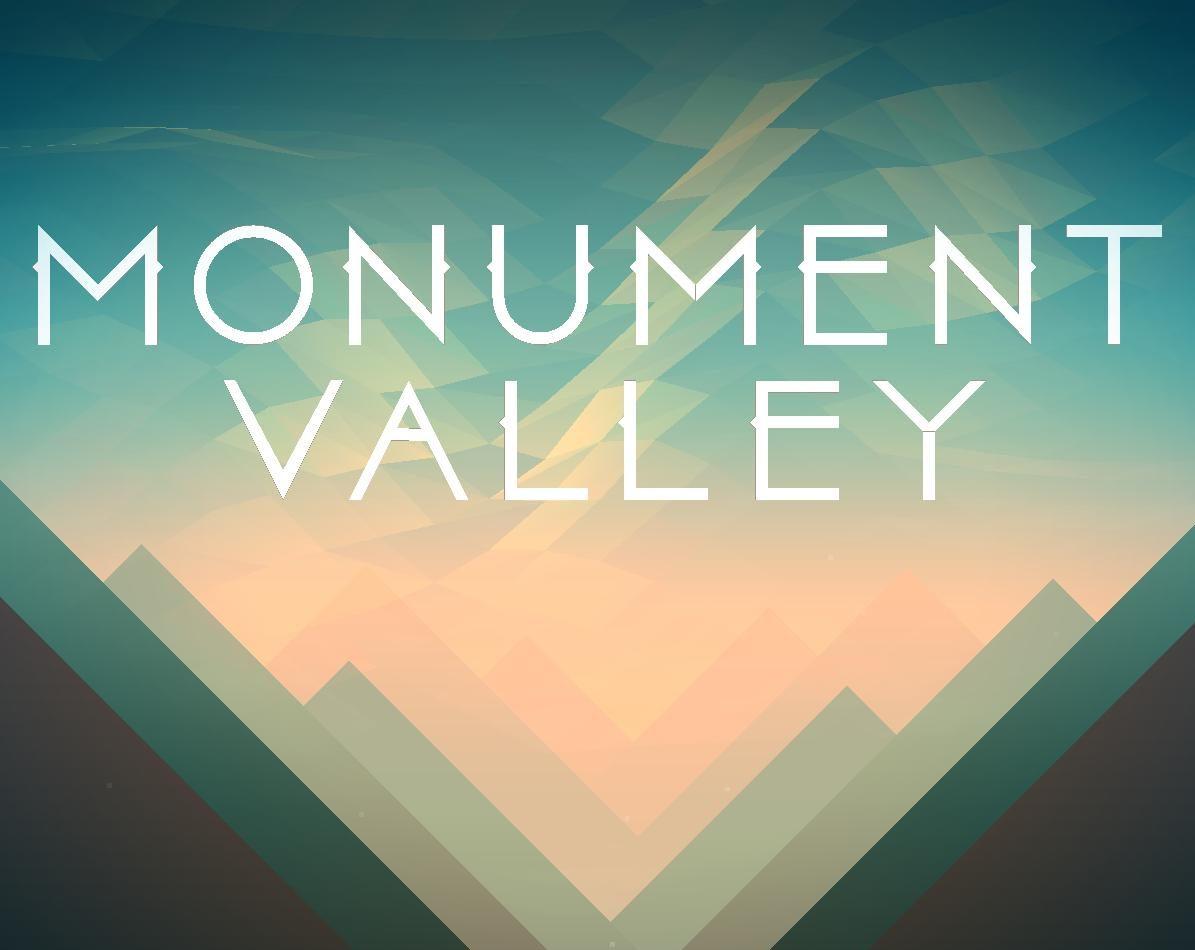Background Information: I played Monument Valley by Ustwo Studios on the IPhone/IOS platform. This is an adventure game that I think is best suited for anyone above the age of 8 years old, because it doesn’t have gory imagery or expletives or dangerous diction, however it does require critical thinking skills to some level to surpass the challenges. I hypothesize that anyone under roughly 8 years old most likely does not have those skills just yet.
The important formal elements of the game are:
Players: I am the princess in this scenario, and this game is a player vs. game style of game.
Objectives: This game has clear objectives for the player: go from the start of the level to the end. The player then has to figure out how to get the princess from start to finish, bringing in the challenge element.
Boundaries: The game is played through travelling through the paths the map puts before the player. Since the game is limited in that the princess only moves where the player touches on the screen, if I touched off the path, the game doesn’t even register that touch as a legitimate touch. A legitimate touch gives feedback to the player in the form of a dot indicating where the princess will go.
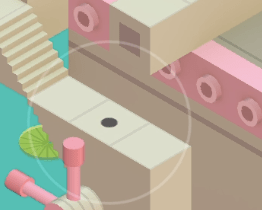
Resources: The resources offered are the different interactive elements that the princess can manipulate to cross gaps between paths. She can rotate paths, slide walls up etc. to get herself from origin to destination. Other than that, the player receives no major help in the form of like power-ups.
Outcomes: This game is the type where one either “wins” or they “lose” in the sense that either the player completes the puzzle and moves on, or they do not and are stuck on the current level they are at. There is no ambiguity as to a player’s progress i.e. they can continue on even if not completing the level. Therefore, it’s clear when one is winning or progressing and when one is losing or stagnant.
Type of fun:
This game definitely leans on a narrative/challenge type of fun, because, as seen in the photo, the puzzles unlock milestones in a larger storyline. This storyline helps me get invested in the princess’s plight. Furthermore, the challenge comes in with the puzzles: they are not like riddles, which, per the reading for this week, is the least satisfying type of puzzle; they are more interactive and require the use of some forethought/planning to go the right way from start to finish. This makes the game adequately challenging, but not one where the challenges are insurmountable, I get stuck, and then I give up. Having a nice storyline arc and an appropriate difficulty both add to my assessment that the main types of fun for this are narrative and challenge, and that this game achieves the goals of those types of fun.
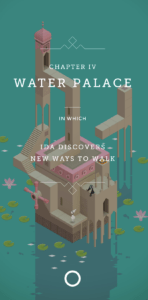
Moments of particular success or epic fails:
This game is stunning in terms of giving feedback on a user’s status in relation to the final destination point, which I think is a major success. Not only is the destination visible the entire time on the game page (which is helpful for figuring out where to go), but the visuals are very helpful. The shading of the pillars and levels indicate depth and elevation/height which help to indicate to players where the character is in relation to the final destination. For example, the game shows that I need to go up geographically on the map, because the final destination has light shining on it versus my character being in a darker area, indicating she’s at a lower point. From this lighting/shading cue, I look for something that can help me elevate myself such as stairs, a ladder, a sliding wall).
Furthermore, the designers indicate to the users which facets of the landscapes are interactive through coloring. If you notice in the photo below, the pink elements are all touchable and perform a specific purpose: the turn-style is used to move a path, the dotted square indicates a sliding wall, the pink column with a spike indicates the destination.
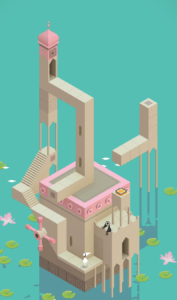
Things I would change to make it better:
To be honest, this game is exquisite in many ways so finding avenues of improvement are difficult. The main things I would say is that some of the new elements of the game, like the sliding wall, lacked any tutorial or onboarding text to tell me how the sliding wall worked; if there was just some quick information text to say “this wall slides left and right” I would have loved that. However, even with this point, the designers did a great job putting visual cues or information scents so that I could guess that the wall slides (when you tap on the three dots, there is a visual feedback where the dots light up and change color).
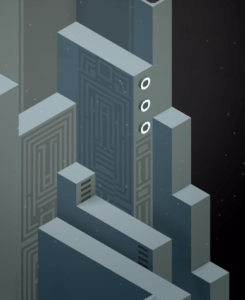
Clever decisions that the creator made:
The designers of this game were incredibly creative in how they colored the game. The bright color of my character, especially in dark settings, make her easy to locate which is just a helpful detail the creators didn’t have to necessarily make for the game to be fun, but it’s nice. Secondly, the designers made the “goal spots” or the “final destination” locations easy to spot because they are colored and highlighted differently. If you see the image below, the hexagon shaped plate is definitely noticeable and easy to discern that it’s a location worth investigating. This makes the game a lot easier to navigate without the need for exhaustive tutorials or hints.
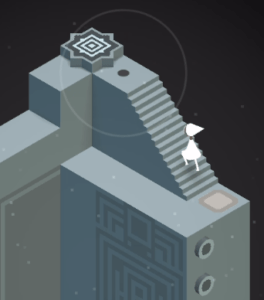
Lastly, the designers used intuitive features of the real world to help players understand elements in the game. For example, there are ladders and stairs which, as we know about reality, are objects one can climb to go to higher or lower levels. In the photo below, you can see the ladder that the princess scales (at the behest of me selecting a spot on the screen) to get to her current position. This translation of real-world objects to this fantastical realm is helpful for creating an intuitive experience (leans on familiarity of user’s experience – something we have covered in readings previously).
